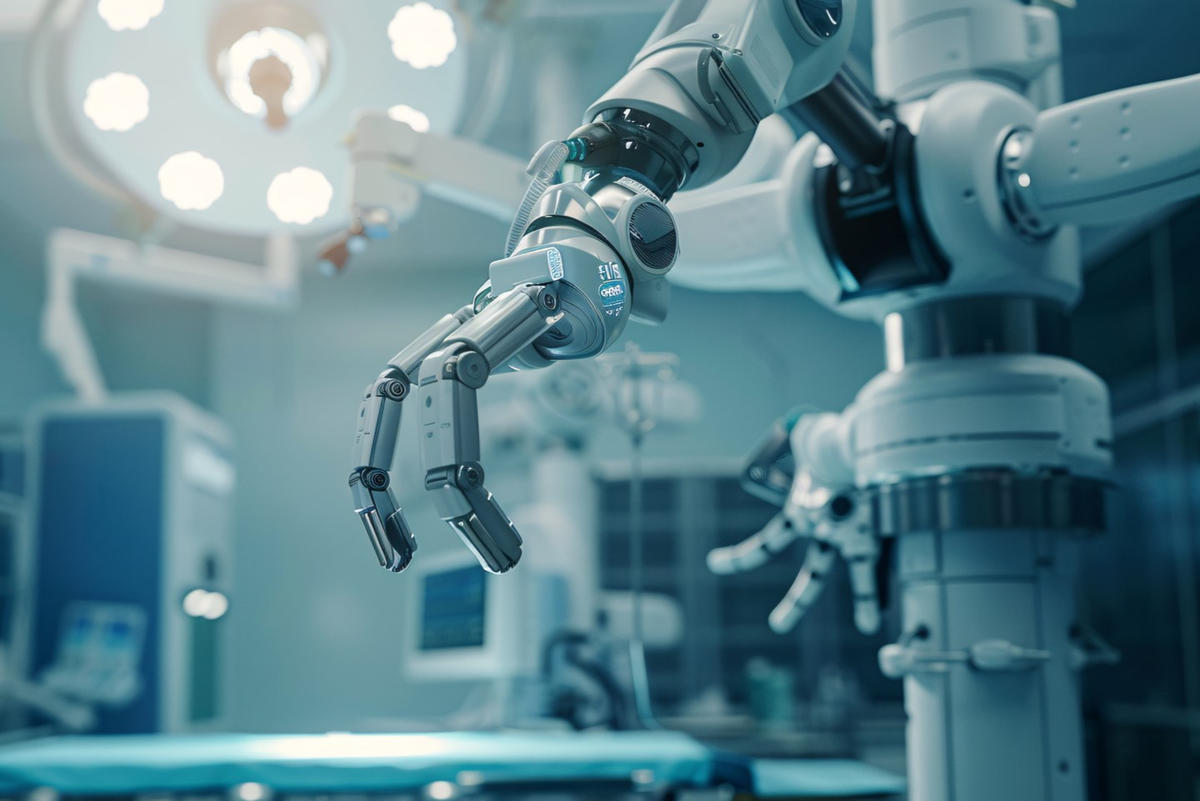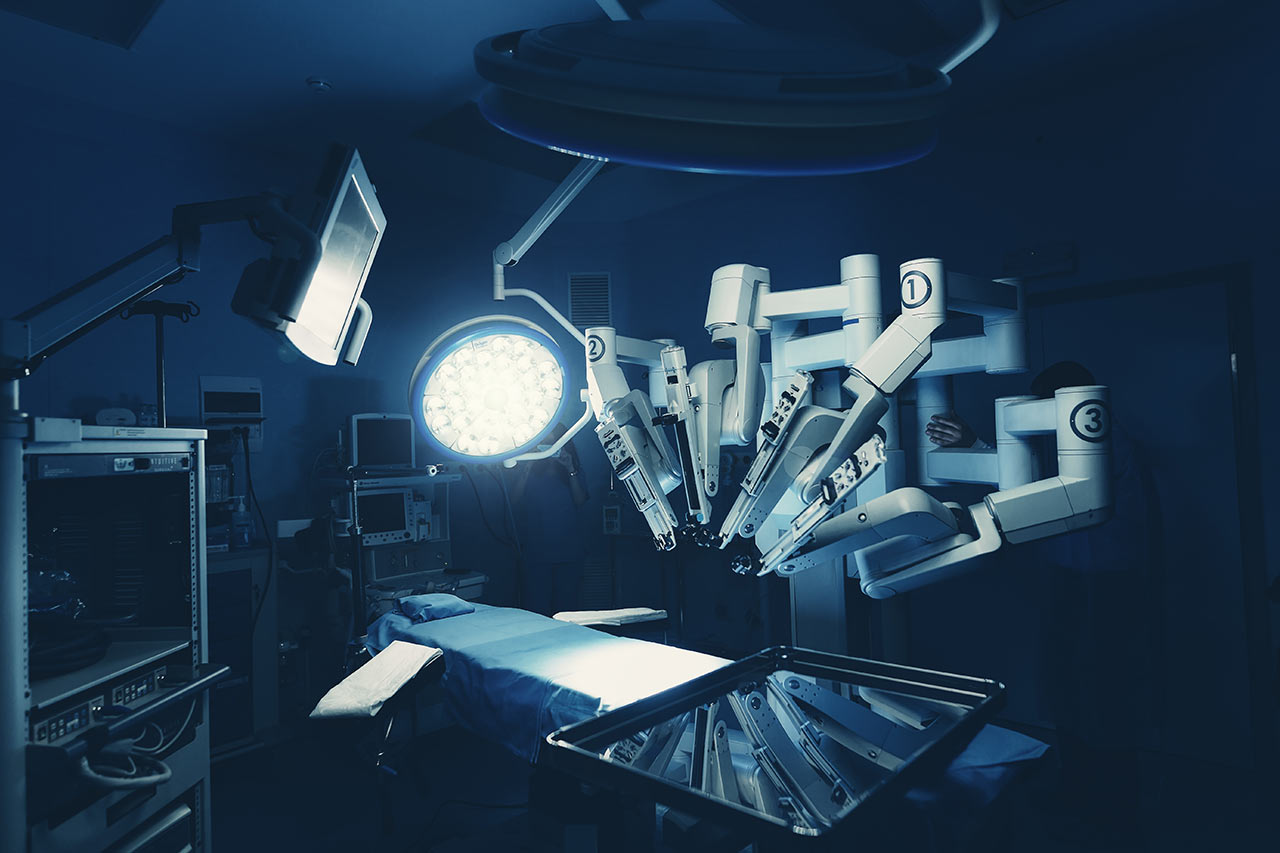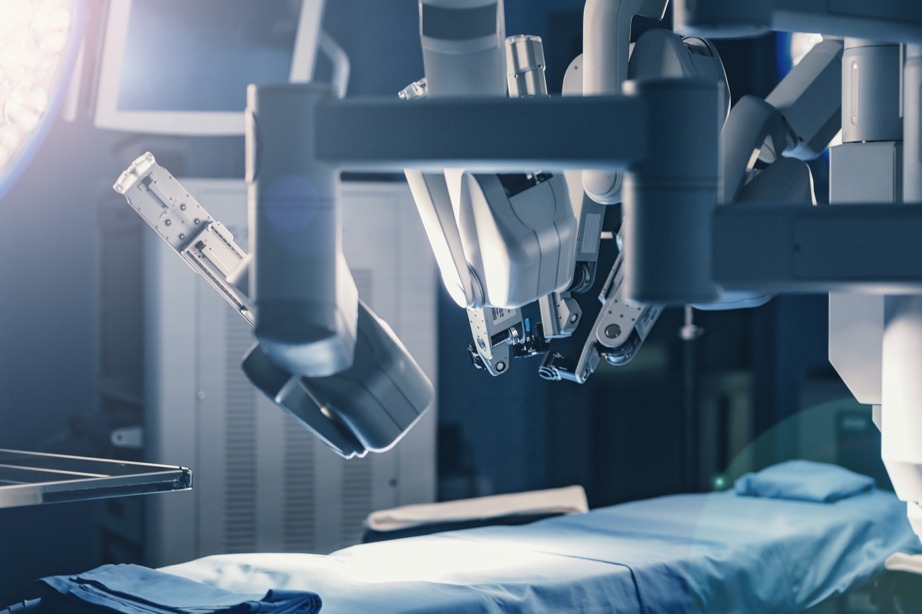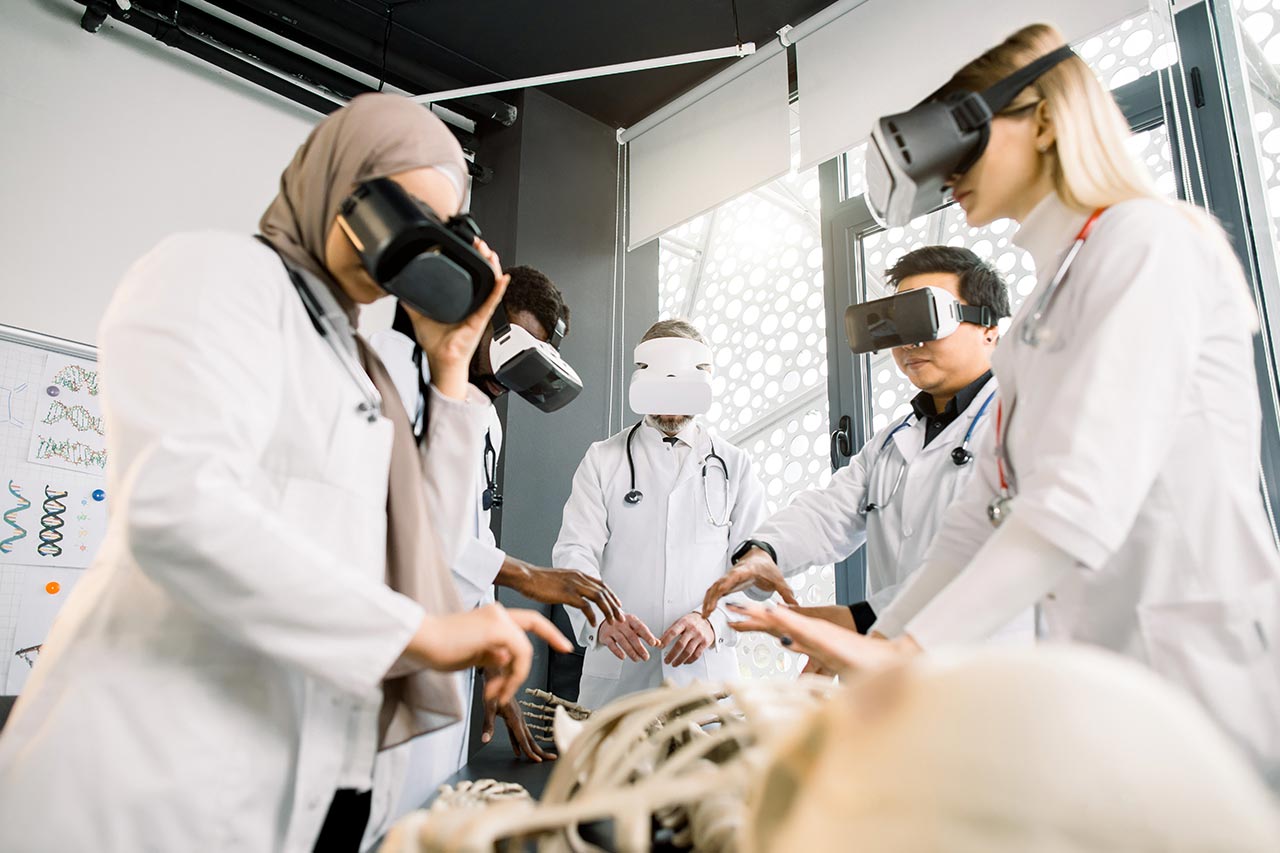The evolution of telesurgery since 1970s
The evolution of telesurgery has been marked by significant milestones. This concept was initially explored by the U.S. government agency NASA in the 1970s, with a focus on its potential application for astronauts in orbit.
During the 1980s and 1990s, the emergence of telerobotic surgery made significant advances towards telesurgery. The first telerobotic surgery was performed in 1985 with the introduction of a surgical robot (PUMA 560 by Unimation) used in a brain biopsy procedure to reduce movement due to surgeons’ hand tremors. The early 1990s saw further developments with the creation of ROBODOC (Integrated Surgical Solutions, Inc. and IBM), which successfully prepared the femur for hip replacement in human subjects in 1992. By the late 1990s, engineers had developed advanced systems like the da Vinci Surgical System, AESOP, and Zeus surgical systems, combining laparoscopic technology with surgical robots to enhance surgical precision and outcomes.
The first transatlantic telesurgical operation, known as the ‘Lindbergh Operation’ [4], was a crucial moment in the evolution of telesurgery. This procedure took place in 2001 when a team of French surgeons located in New York successfully performed a complete telesurgical operation on a patient in Strasbourg, France. The operation, named after Charles Lindbergh’s historic transatlantic flight, demonstrated the potential of remote surgical procedures. This achievement was made possible byomputer Motion’s Zeus Robotic Surgical System and an end-to-end high-speed optical fiber link deployed by France Telecom, which reduced time delays to enable real-time control of surgical instruments.
In 2008, feasibility studies confirmed the viability and safety of robotic telesurgery. The studies focused on assessing the practicality and effectiveness of remote surgical procedures, and they confirmed the potential for telesurgery to be a safe and reliable method for conducting surgeries.
Today, medical telesurgery is at its peak! With remarkable advancements, it now offers more efficiency and comfort for surgeons.
Looking to the future, SpaceMIRA, a 1kg surgical device, successfully conducted a surgical simulation aboard the ISS on February 10, 2024. Six surgeons remotely guided the robot using hand and foot controls from a console in the U.S., skillfully dissecting elastic tissue with a pair of scissors in a zero-gravity environment. However, the remote surgery in space revealed a half-second delay, indicating that mastery in this field is still a work in progress.
4 benefits of telesurgery
Benefit n°1: bringing top-notch surgical care to areas lacking medical access
Telesurgery eliminates geographical barriers, bringing top-notch surgical care to areas lacking medical access such as rural regions or battlefields.
Benefit n°2: reducing the risks associated with long-distance patient travel
Telerobotic surgery eliminates the expenses required to travel to specialized medical centers. Additionally, it ensures timely medical care, bypassing delays and risks associated with travel. Facilitating early interventions and reducing patient stress and discomfort can enhance treatment outcome.
Benefit n°3: enhancing surgical precision with advanced technology
The integration of advanced haptic feedback technology has significantly improved precision in telerobotic surgery. Haptic feedback refers to the sense of touch provided to the surgeon during a procedure, allowing them to perceive tactile sensations like those experienced during traditional surgery. It enables surgeons to operate with great accuracy and control.
Benefit n°4: facilitating surgical collaboration between specialists
Remote surgery also enhances surgical collaboration between specialists. In 2014, Shenai et al. introduced VIP (Virtual Interactive Presence), an innovative technology that allows remote neurosurgeons to collaborate with a shared 3-Dimensional display via high-definition binoculars. This allowed Shenai et al. to successfully carry out craniotomies and pineal approaches on a cadaveric model. VIP is valuable not only for patient care but also for surgical training, enabling real-time interaction among surgeons from various medical specialties and geographical locations.
Learn more about how our team can support you in your virtual care projects >
What are the challenges of telerobotic surgery?
Despite telesurgery latest advancement and numerous benefits, obstacles like latency problems, legal intricacies and funding limitations persist, hindering its broader development.
In addition, telerobotic surgery introduces significant changes and challenges that go beyond the realm of equipment and regulations:
Supporting the mental and emotional well-being of the surgical team in adopting telesurgery
Remote surgery reshapes the dynamics within the operating room, altering traditional patterns of organization and interaction between medical professionals. A recent study has shown that the introduction of a surgical robot into an operating room increases the physical and sensory distance between team members. This rearrangement has a major impact on the mental and emotional state of the surgical team and requires more effort throughout the operation to maintain awareness and symbiosis.
Strengthening the patient-surgeon relationship in a virtual setup
Telerobotic surgery can also have a profound impact on the patient-surgeon relationship. The virtual nature of telesurgery creates a physical distance, making it harder for patients to feel connected to their surgeons and to place trust in them. Emotional support may also be affected, as the remote setup limits the surgeon’s ability to convey empathy.
In conclusion, this journey through time and space reveals the remarkable evolution of telerobotic surgery from its early exploration by Nasa to its recent success aboard the ISS. This technology has the potential to transform global healthcare by overcoming the lack of medical teams in remote areas. Although technological, financial, and legal challenges remain, another concern will be to ensure a balance between the rapid technological progress and the importance of preserving essential human qualities such as trust and connection both within the operating team and in the patient-surgeon relationship. Alcimed is ready to help you overcome challenges of telemedicine and robotics in healthcare. Do not hesitate to contact our team!
About the author,
Hélène, Consultant for Alcimed’s healthcare team in Switzerland



